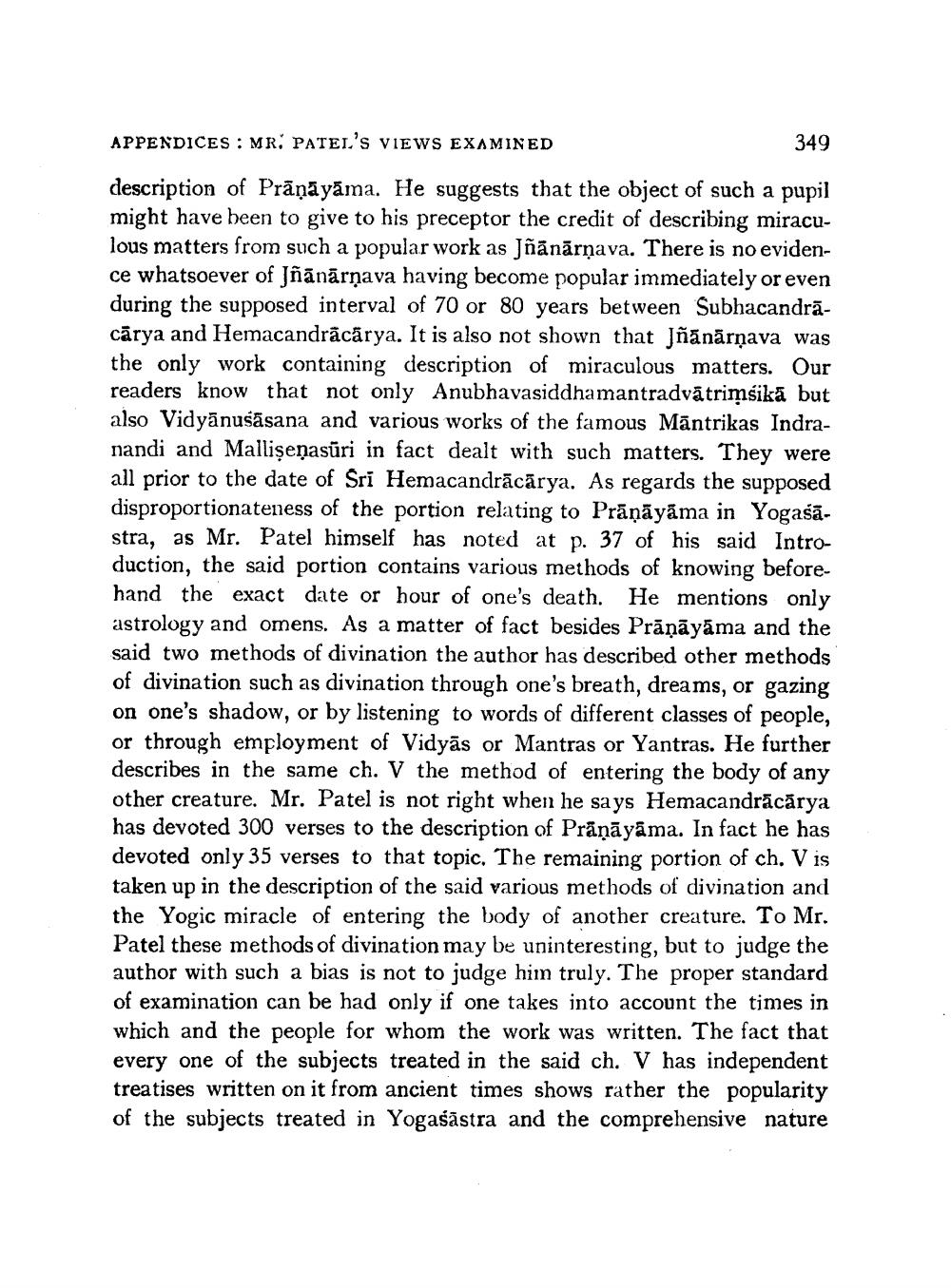________________
APPENDICES : MR. PATEL'S VIEWS EXAMINED
349
description of Prāņāyāma. He suggests that the object of such a pupil might have been to give to his preceptor the credit of describing miraculous matters from such a popular work as Jñānārņava. There is no evidence whatsoever of Jñānārņava having become popular immediately or even during the supposed interval of 70 or 80 years between Subhacandrācārya and Hemacandrācārya. It is also not shown that Jñānārņava was the only work containing description of miraculous matters. Our readers know that not only Anubhavasiddhamantradvātrimsikā but also Vidyānusāsana and various works of the famous Māntrikas Indranandi and Mallişeņasūri in fact dealt with such matters. They were all prior to the date of Sri Hemacandrācārya. As regards the supposed disproportionateness of the portion relating to Prāņāyāma in Yogašāstra, as Mr. Patel himself has noted at p. 37 of his said Introduction, the said portion contains various methods of knowing beforehand the exact date or hour of one's death. He mentions only astrology and omens. As a matter of fact besides Prānāyāma and the said two methods of divination the author has described other methods of divination such as divination through one's breath, dreams, or gazing on one's shadow, or by listening to words of different classes of people, or through employment of Vidyās or Mantras or Yantras. He further describes in the same ch. V the method of entering the body of any other creature. Mr. Patel is not right when he says Hemacandrācārya has devoted 300 verses to the description of Prāņāyāma. In fact he has devoted only 35 verses to that topic. The remaining portion of ch. V is taken up in the description of the said various methods of divination and the Yogic miracle of entering the body of another creature. To Mr. Patel these methods of divination may be uninteresting, but to judge the author with such a bias is not to judge him truly. The proper standard of examination can be had only if one takes into account the times in which and the people for whom the work was written. The fact that every one of the subjects treated in the said ch. V has independent treatises written on it from ancient times shows rather the popularity of the subjects treated in Yogaśāstra and the comprehensive nature




